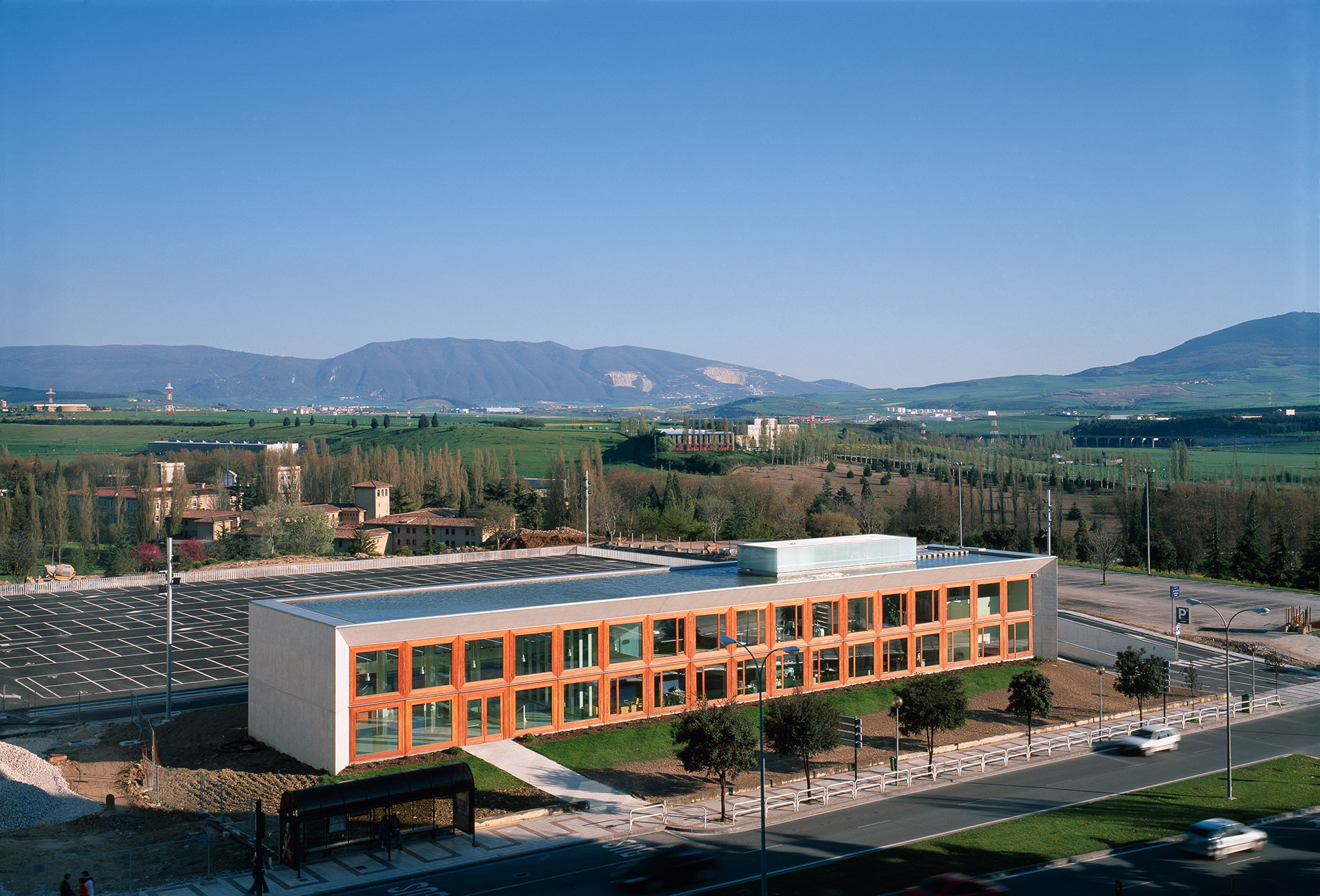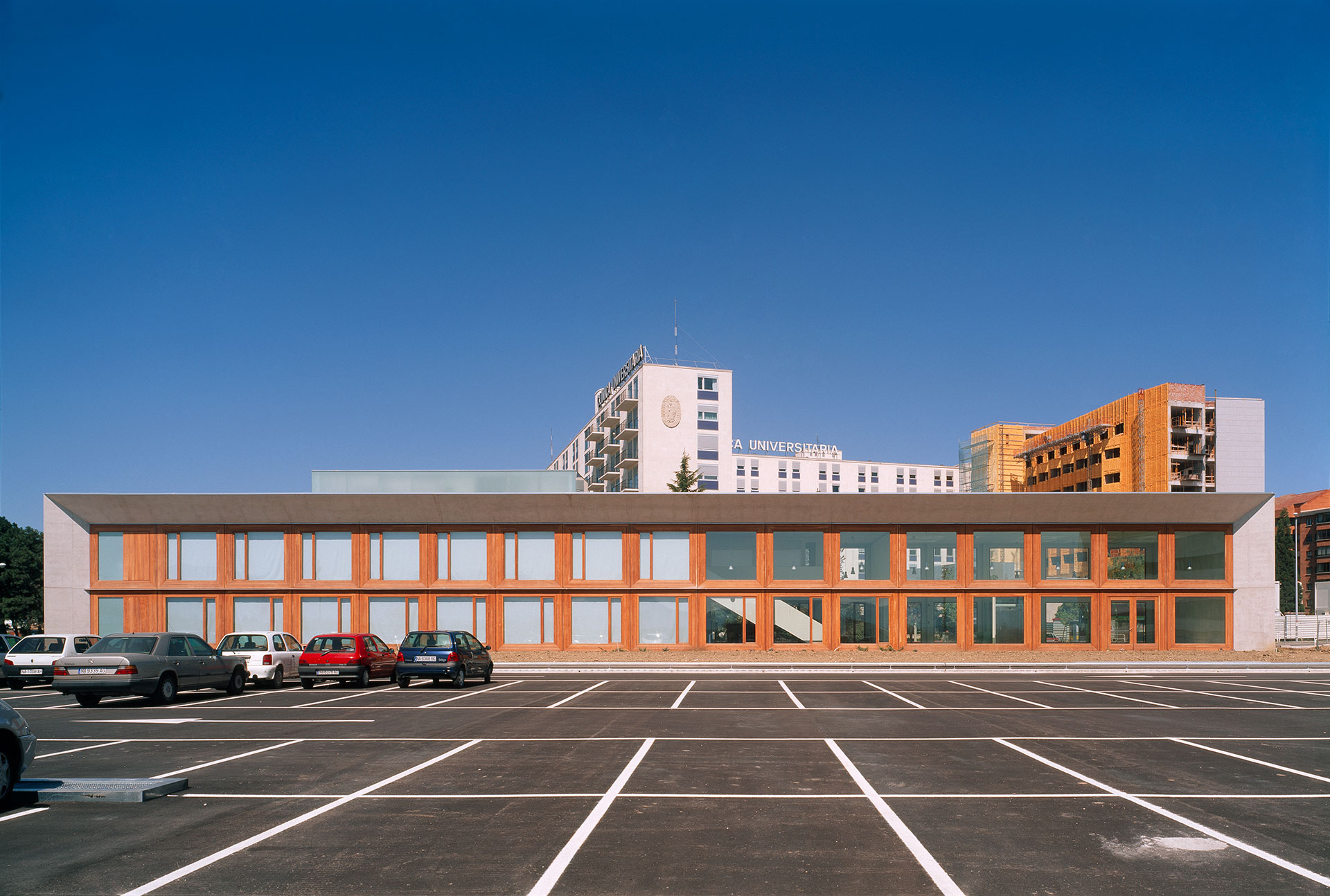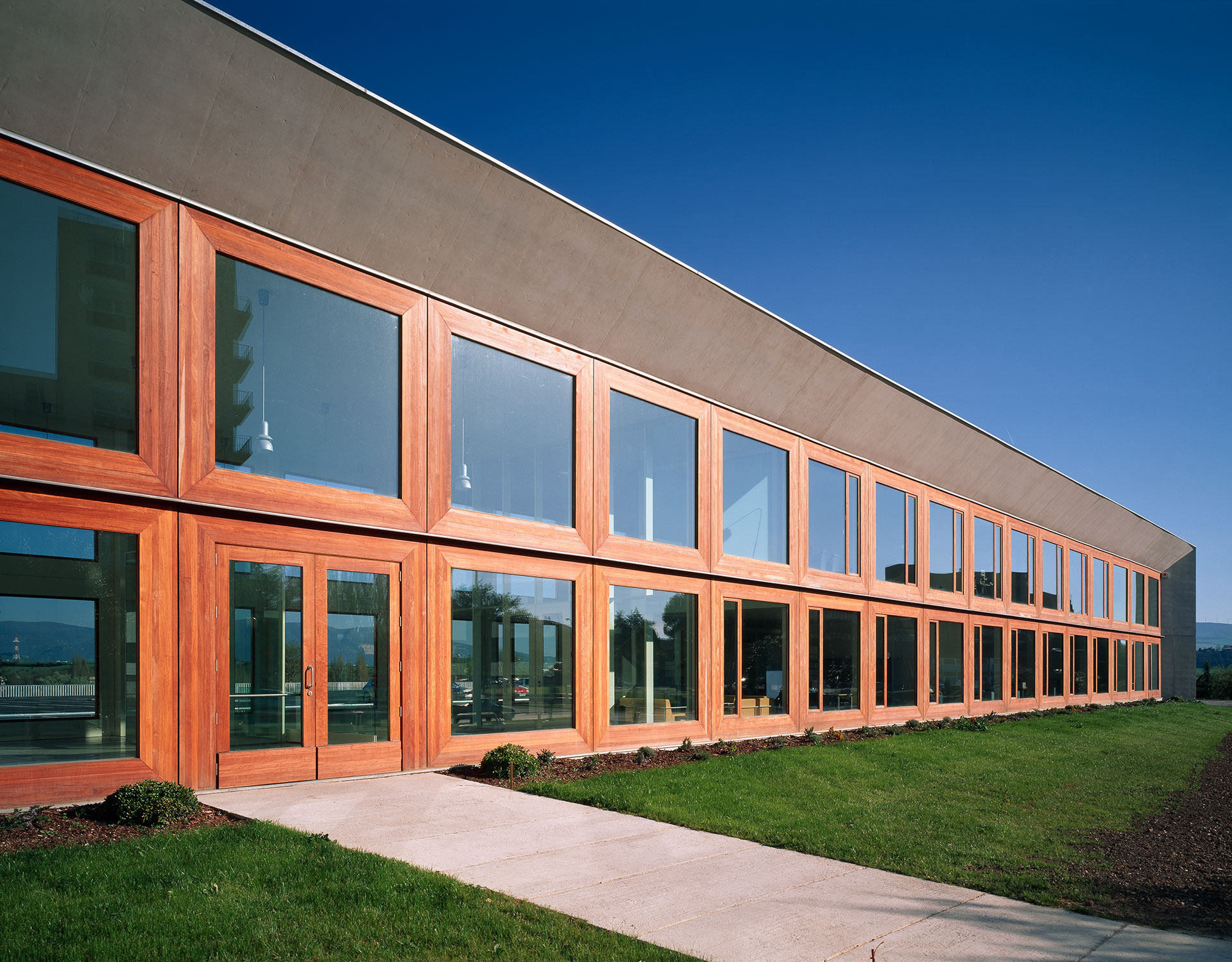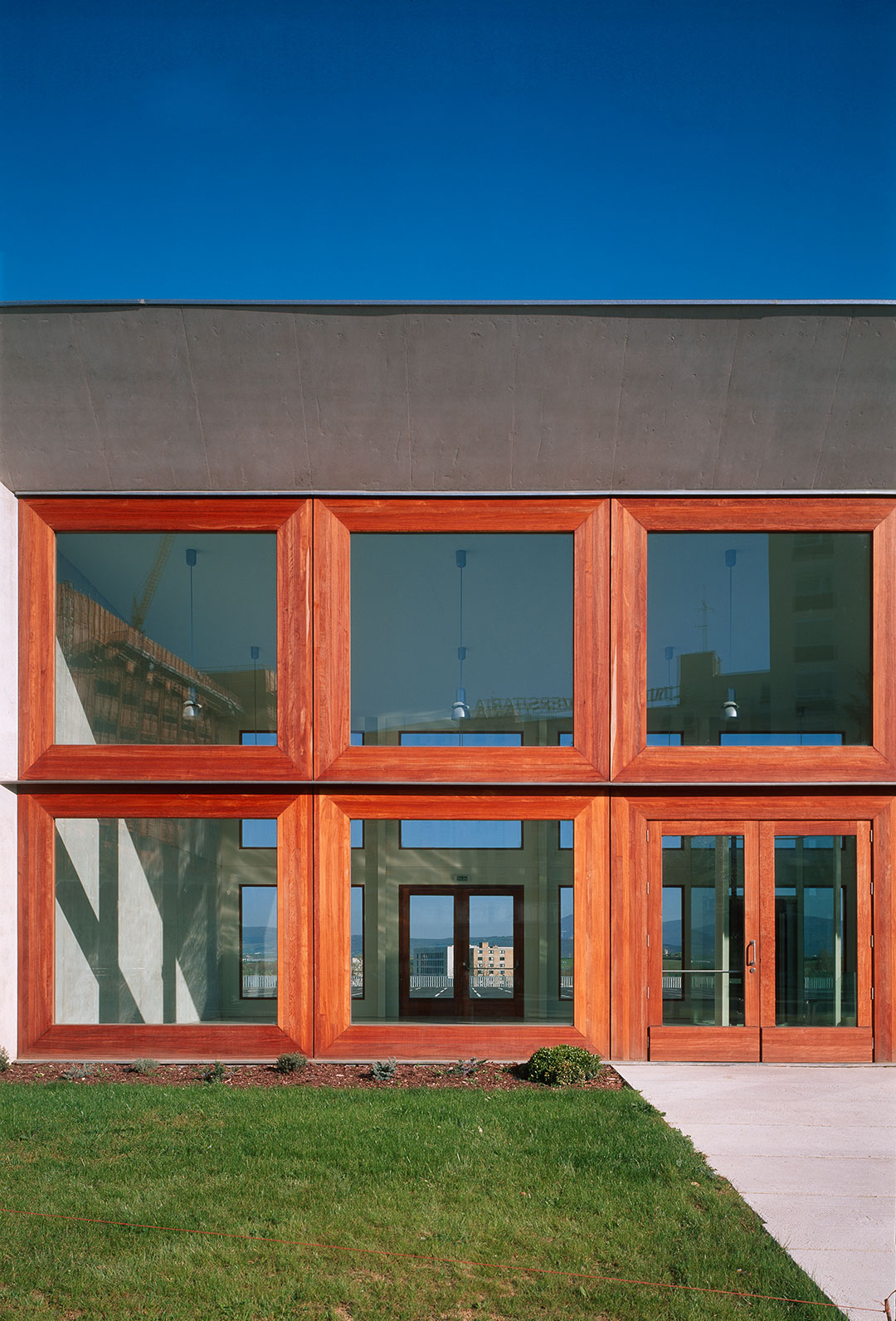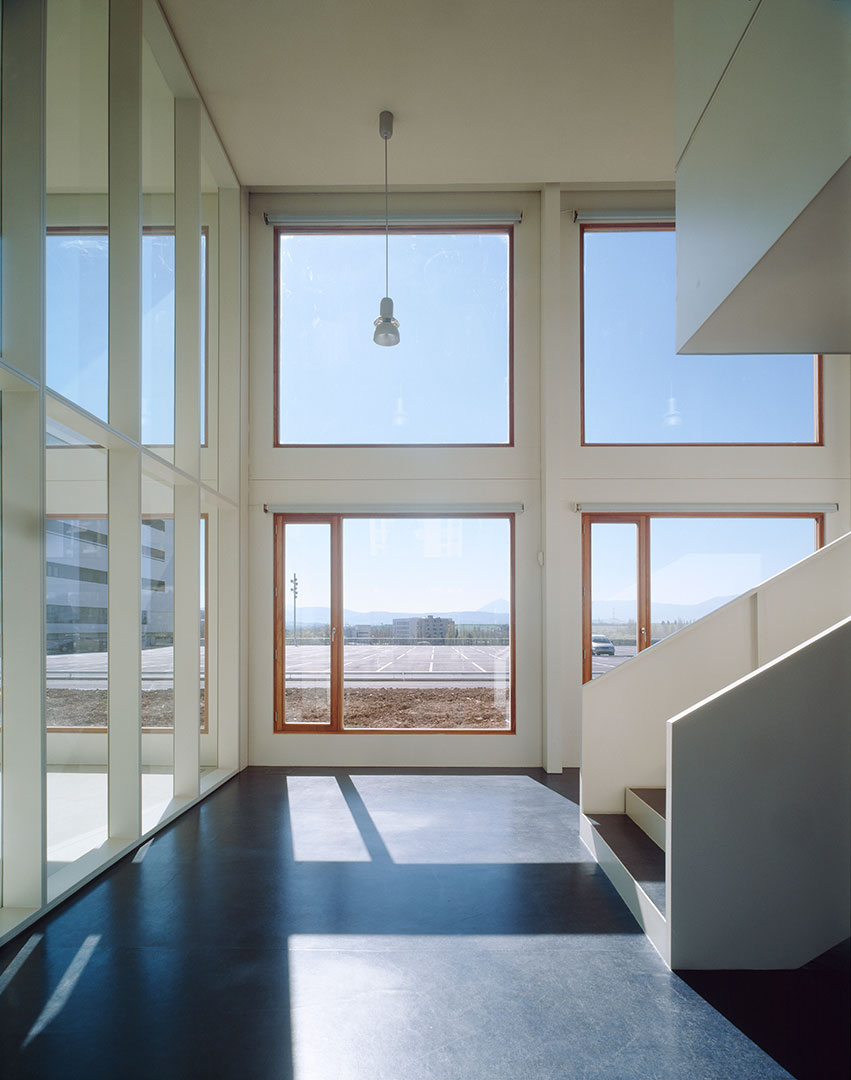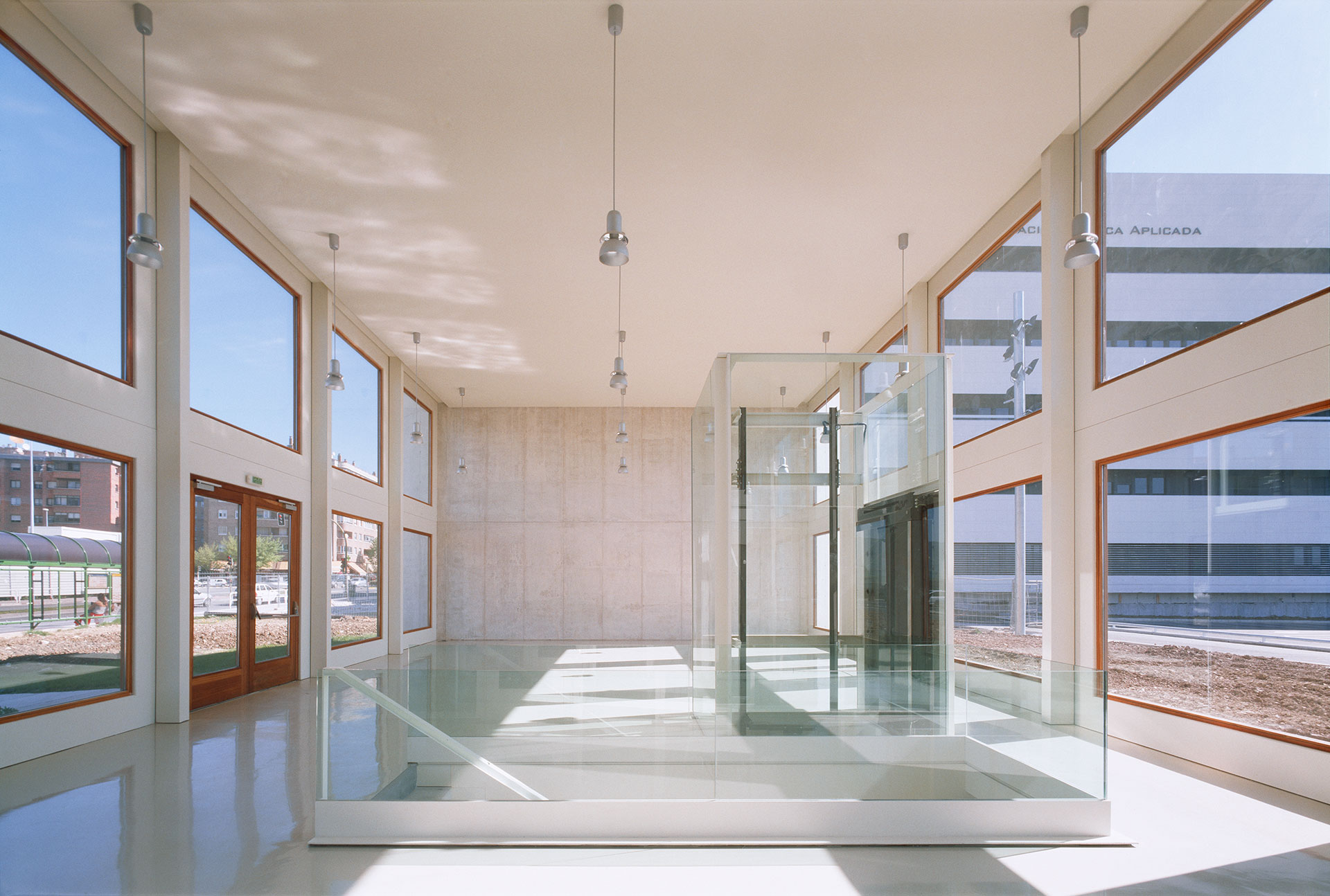Edificio de Oficinas para la Universidad de Navarra
El edificio contiene una serie de oficinas que sirven al rectorado de la Universidad de Navarra. Teniendo en cuenta que el grueso de los edificios de la Universidad se sitúan en grandes laderas ajardinadas, muy atractivas desde un punto de vista paisajístico, el edificio ocupa una posición límite y relativamente urbana dentro del Campus.
Situado en el borde de un vial de acceso a la ciudad bastante importante, el solar propuesto se encontraba rodeado por construcciones siempre mucho mayores y más altas que la que era de esperar para nuestro edificio. A partir del recurso a una idea metafórica como es la de convertir esta pequeña pieza en una “puerta de acceso” al propio campus universitario desde la ciudad, se planteó el proyecto.
El edificio, de forma alargada y muy sencillo, queda definido por una sección de hormigón que construye tanto los hastiales más cortos como la cubierta. En sentido longitudinal se construye una fachada acristalada que no rehuye una materialización clara y contundente en la medida que el muro de vidrio y la transparencia del mismo se ve supeditado a un grueso entramado de madera que da “cuerpo” y “sustancia” al cerramiento, a la vez que contiene la estructura metálica que sustenta el conjunto en el perímetro exterior.
Interiormente las oficinas se organizan de una manera sencilla condicionadas por la modulación de la lógica estructural. Orientadas a este y oeste, su organización busca la claridad y la eficacia en términos de adaptación a las futuras variaciones programáticas que pudieran producirse.
En el interior destaca la presencia de un gran vestíbulo, de doble altura, que, estando a camino entre un espacio representativo y un espacio urbano, manifiesta una ambigüedad claramente buscada y controlada. Este espacio además de resolver el acceso desde el aparcamiento subterráneo que sirve a varios edificios de los alrededores crea una zona pública cubierta en un contexto donde, a pesar de la intensidad de los usos existentes y de la importancia del tráfico rodado, no es posible encontrar un lugar tranquilo. Igualmente dota al edificio de un valor espacial que viene a dignificar un programa de por sí menor.
Dadas las dimensiones del edificio, bajo y alargado, este se puede ver desde cualquier edificio adyacente, por lo que la cubierta se convierte en algo con excepcional presencia, en la fachada más importante. La cubierta es de agua y sobre ella un volumen de vidrio, que contiene las instalaciones y queda iluminado durante la noche, flota y levita reflejando su luz. El agua se renueva y utiliza para resolver problemas de ahorro energético y de aislamiento.
Ciudad
Pamplona. Navarra
País
España
